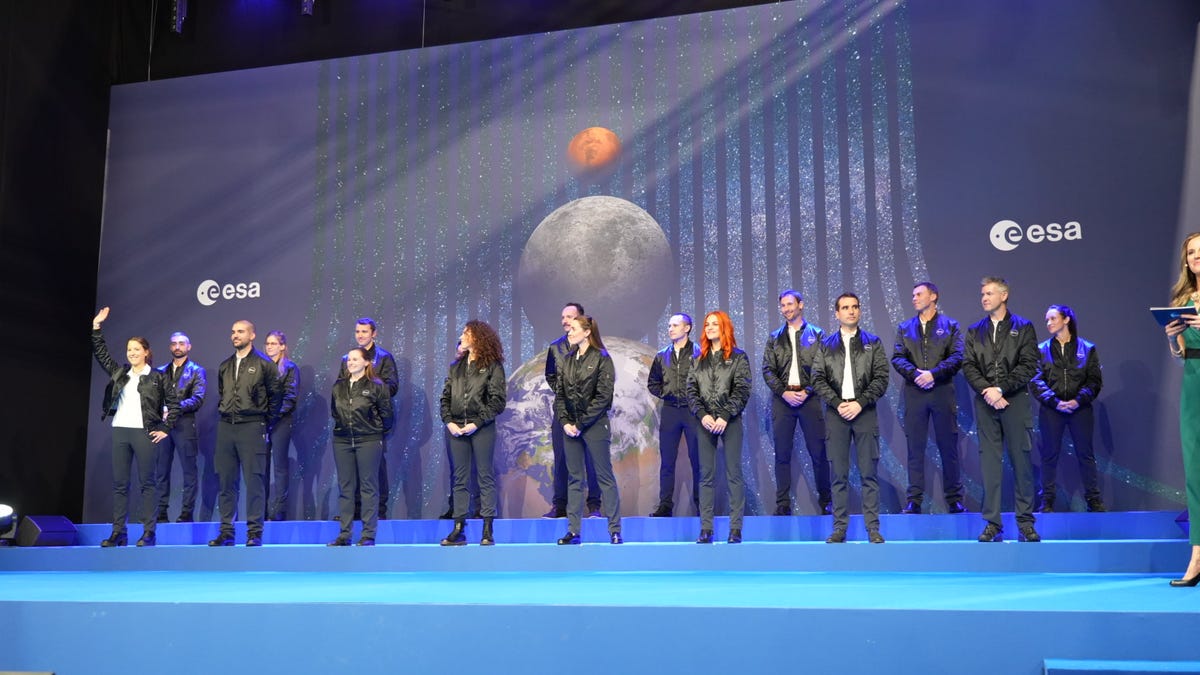ESA Names Astronaut Candidate With a Physical Disability, in a First
"Science is for everyone," Paralympian and surgical trainee John McFall says. "And space travel, hopefully, can be for everyone."

These 17 astronaut candidates were among the more than 22,500 who submitted a valid application in 2021 in response to ESA's call for new astronauts for missions to the International Space Station and beyond.
John McFall is a trauma and orthopedic surgical trainee in England. In 2014, he graduated with a bachelor of medicine and surgery degree from the Cardiff University School of Medicine, and until 2016, was a doctor with the British National Health Service.
Married with three children, the 41-year-old McFall spends his free time running and mountain biking – and now he's been selected by the European Space Agency to be the first astronaut candidate in history with a physical disability.
"I've always been hugely interested in science, generally, and space exploration has always been on my radar," McFall said in a video interview with ESA. "But having had a motorcycle accident when I was 19 – like wanting to join the armed forces – having a disability was always a contraindication to doing that."
Following that motorcycle accident, which occurred in the early 2000s, McFall had to have his right leg amputated.
The astronaut candidate roster released by ESA Wednesday includes eight women, or nearly half the total pool. The 17 members of the 2022 roster consists of five career astronauts, 11 members of an astronaut reserve and McFall himself, part of the "parastronaut" program.
"This ESA astronaut class is bringing ambition, talent and diversity in many different forms – to drive our endeavors, and our future," ESA Director General Josef Aschbacher said in a statement. "The continuous exploration in low Earth orbit on the International Space Station, going forward to the Moon – and beyond."
McFall's amputation didn't stop him from learning to walk, and even run, again.
John McFall, from the United Kingdom, is a member of the ESA astronaut class of 2022.
He became a professional track and field athlete in 2005, representing Great Britain and Northern Ireland as a Paralympic sprinter – and has been crowned with titles including Paralympic World Cup Champion, 200 meters, in 2007 and World Silver Medalist, 100 meters, in 2006. McFall also took prizes in anatomy and dissection during medical school and was runner-up in 2018 for the Queen Alexandra Hospital Junior Doctor Awards.
So when ESA announced last year that it was looking for astronaut applicants who have a disability but are otherwise qualified for space expeditions – a "parastronaut," the agency dubs the position – McFall jumped at the opportunity.
"For the parastronaut feasibility project," the agency stated during its open call, "ESA is looking for individual(s) who are psychologically, cognitively, technically and professionally qualified to be an astronaut but have a physical disability that would normally prevent them from being selected due to the requirements imposed by the use of current space hardware."
The goal, according to ESA, is to invest in learning how to enable a more diverse pool of space explorers for the next generation of extraterrestrial science.
It's a timely aspiration with talk of settling Mars in the near future and planting more boot prints on the moon with NASA's Artemis program, now well underway. In an overview of the endeavor, the organization says it intends to allocate an initial budget of 1 million euros ($1.039 million) for this project, directed toward understanding what kinds of tools and technical adjustments would help a parastronaut thrive both in zero-gravity environments and during the intense journey beyond Earth.
"I read the persons specification and what it entailed," McFall said of seeing the application for the first time, "I thought I would be a very good candidate to help ESA answer the question they were asking: Can we get someone with a physical disability into space?"
Together with international partners and crew vehicle providers, ESA plans to work with McFall to identify potential adaptations that'll eventually enable an astronaut with a physical disability to fly to space and partake in important science investigations. They'll likely examine things such as how prosthetic limbs operate off-Earth, how exercise would work for someone with an amputated limb and perhaps whether some structural modifications can create better access for a disabled person to float around the ISS.
"If there is one thing we have learned by working on the International Space Station (ISS), it is that there is great value in diversity," ESA said in its overview. "Including people with special needs also means benefiting from their extraordinary experience, ability to adapt to difficult environments, and point of view."
In the same vein, McFall said he's excited about using his skills at problem solving, identifying issues and overcoming obstacles to help people with a physical disability perform jobs as do their counterparts without a disability.
"Science is for everyone," McFall said. "And space travel, hopefully, can be for everyone."

